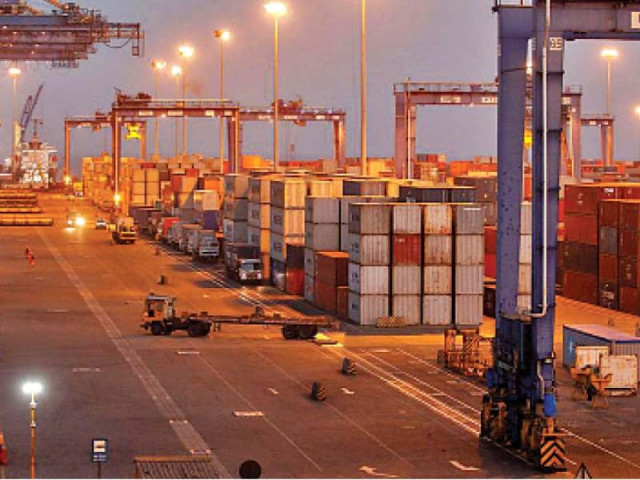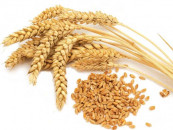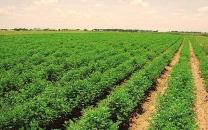Export curbs as a tool for price control
Restrictions will break export growth momentum, send negative signal to foreign buyers

According to press reports, the government is mulling over clamping a ban on export of perishable commodities to check price hike.
The proposal gives rise to some questions: (a) Can the proposed ban help in controlling prices of food items? (b) Can the target be achieved by some other and less stringent policy measure? (c) What can be the likely consequences of the proposed ban for Pakistan’s exports?
To answer the questions, let’s turn to elementary economics. The total output that an economy produces is either consumed domestically or exported. Therefore, the greater the quantity of a product is exported, the less of it is available for domestic consumption. According to the law of supply, a fall in the supply of a product, relative to its demand, drives up prices. Export ban, on the other hand, will make a greater quantity of the product available in the domestic market and thus can prevent its price from rising.
Hence, from a theoretical perspective, the ban on export of perishable products can be instrumental in curbing price hike. However, in real world, the strength of the relationship between export prohibition and price hike depends on quite a few factors.
For example, the greater is the share of exports in a country’s total output, the greater is the quantity for domestic consumption that export ban can release, and the stronger will be the downward impact on prices. In Pakistan, however, exports account for not more than 9% (8.47% to be precise) of the gross domestic product (GDP) or total output, therefore export restrictions can at best have a marginal impact on bringing down prices. This is even truer for perishable or agricultural products.
At the close of fiscal year 2020-21 (FY21), the size of Pakistan’s economy (GDP) was $298 billion. As the share of agriculture in GDP was 19%, the size of the agriculture sector was $56.6 billion.
During FY21, the total export of food products was $4.4 billion. Thus, food exports accounted for only 7.7% of the total agricultural output and 1.45% of GDP.
In the face of such a small share of food exports in output, banning exports will have only a marginal impact on controlling food prices.
In Pakistan over the years, the relative size of services sector has increased at the expense of both industry and agriculture, which are collectively called the commodity producing sector.
At the same time, domestic demand has gone up due to factors such as increase in population. The shrinking relative size of the commodity producing sector in the face of expanding domestic demand is a major cause of rising prices. As a result, Pakistan has become a net food importer.
Let’s take a look at the recent data. In FY19, FY20 and FY21, Pakistan’s export of food products was $4.60 billion, $4.36 billion and $4.39 billion respectively.
During these three years, the import of food products amounted to $5.66 billion, $5.42 billion and $8.35 billion respectively. Thus, during the last three years, Pakistan’s cumulative net food imports (the difference between exports and imports) sat at $6.08 billion ($19.43 billion in imports and $13.35 billion in exports) or $2.02 billion per annum on average.
During FY21, the net food imports scaled up to $3.96 billion, mainly because of the unexpected $983 million wheat import bill.
Nearly half of Pakistan’s food exports consist of rice. In FY19, FY20 and FY21, Pakistan exported $2.06 billion, $2.17 billion and $2.04 billion worth of rice respectively.
Annual production of rice is about 7.5 million tons, out of which about 3.5 million tons of the commodity is consumed domestically, while the rest is exported.
The next major export commodity is fruits and vegetables, with annual exports of around $700 million. On the other hand, the annual import of fruits and vegetables is about $800 million, meaning that Pakistan is a net importer of fruits and vegetables. In such a situation, the ban on export of food products is not likely to be of much consequence in controlling prices.
Export growth under threat
Not only that, a ban on export of perishable products will adversely affect the current export growth momentum.
In FY21, Pakistan’s total exports registered 18% growth YoY, while in the first quarter of current financial year, exports, as per provisional data, went up 28% YoY.
Export prohibition will not only break the momentum of export growth (short-term consequences), it will also convey a negative signal to foreign buyers about Pakistan’s trade policies (long-term consequences) and may create doubts about Pakistan being a credible trade partner.
Although World Trade Organisation (WTO) rules allow a country to temporarily ban or otherwise restrict export of essential commodities to overcome their domestic shortage, in practice export ban is widely regarded as an extremely stringent measure and is not well received internationally, except of course by a country’s competitors.
Some less stringent measures are also available with the government to forestall shortage of essential commodities in the domestic market.
For instance, the government can fix minimum export price of the targeted commodities, which would prevent the export of relatively low-priced products, thus benefitting the low-income consumers.
The government can also impose export duties or set quantitative limits on export of food items, which will reduce their foreign sales, thus adding to the domestic supply.
Although less stringent than the export ban, such measures may also have the effect of pulling the plug on export growth and conveying a negative signal to foreign buyers. That is the reason countries generally hesitate from taking such measures.
In any case, exports are not a major cause of the rising food prices and thus will not constitute a credible cure.
The rising inflation can be attributed to such long-run factors as the declining farm productivity and falling share of agriculture in GDP, which has made Pakistan a net food importer.
Then there are seasonal variations, as farm produce is subject to the vagaries of weather and pest attacks, which forces the government to import food items. For example, during FY21, 3.6 million tons of wheat was imported, while no wheat was imported during FY20. Even if agricultural products are imported duty free, transportation costs add to the final price.
The recent slide in exchange value of the rupee has also contributed to the price hike.
Finally, market imperfections, such as cartelisation, infrastructure bottlenecks and rent-seeking by intermediaries, have also driven up prices.
The writer is an Islamabad-based columnist
Published in The Express Tribune, October 11th, 2021.
Like Business on Facebook, follow @TribuneBiz on Twitter to stay informed and join in the conversation.

















COMMENTS
Comments are moderated and generally will be posted if they are on-topic and not abusive.
For more information, please see our Comments FAQ